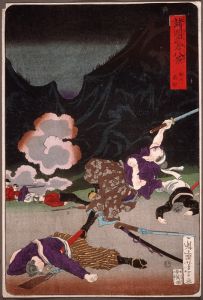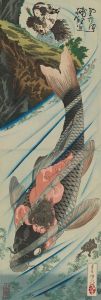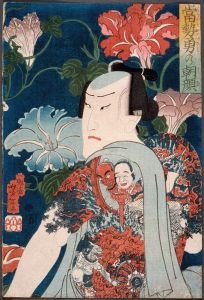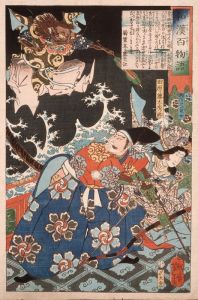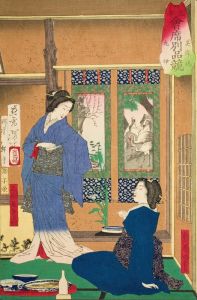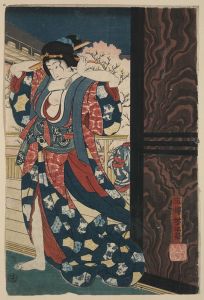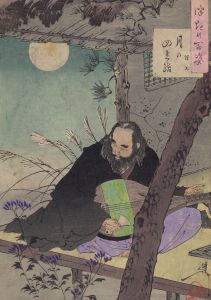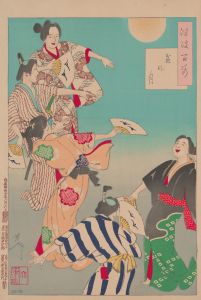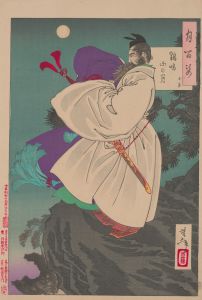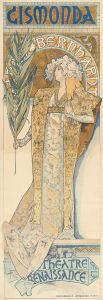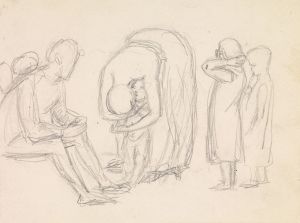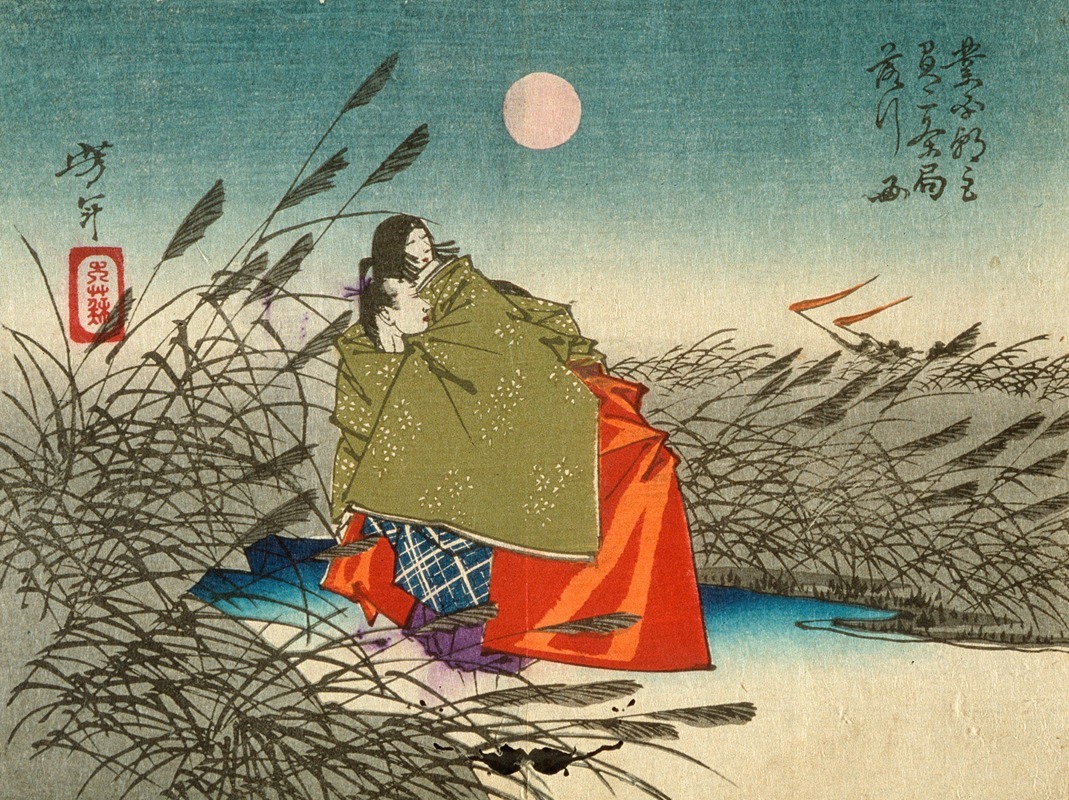
Narihira and Nijō no Tsubone at the Fuji River
A hand-painted replica of Tsukioka Yoshitoshi’s masterpiece Narihira and Nijō no Tsubone at the Fuji River, meticulously crafted by professional artists to capture the true essence of the original. Each piece is created with museum-quality canvas and rare mineral pigments, carefully painted by experienced artists with delicate brushstrokes and rich, layered colors to perfectly recreate the texture of the original artwork. Unlike machine-printed reproductions, this hand-painted version brings the painting to life, infused with the artist’s emotions and skill in every stroke. Whether for personal collection or home decoration, it instantly elevates the artistic atmosphere of any space.
Tsukioka Yoshitoshi (1839–1892) was a prominent Japanese ukiyo-e artist, widely regarded as one of the last great masters of this traditional woodblock printing and painting style. Among his extensive body of work, the piece titled Narihira and Nijō no Tsubone at the Fuji River stands out as an example of his skill in combining historical and literary themes with dynamic composition and emotional depth.
This artwork depicts a scene inspired by classical Japanese literature and history, specifically referencing the Heian period (794–1185). The central figures in the piece are Ariwara no Narihira, a celebrated poet and courtier, and Nijō no Tsubone, a court lady. Ariwara no Narihira is traditionally associated with the Tales of Ise (Ise Monogatari), a collection of poetic episodes that blend fiction and autobiography. While Nijō no Tsubone's historical identity is less clearly defined, she is often portrayed in Japanese art and literature as a figure of courtly elegance and refinement.
The setting of the Fuji River, a famous natural landmark in Japan, adds a dramatic backdrop to the scene. The river, located in present-day Shizuoka Prefecture, is known for its swift currents and scenic beauty, often serving as a symbol of impermanence and the passage of time in Japanese art and poetry. Yoshitoshi's depiction captures the tension and movement of the river, reflecting the emotional undertones of the narrative.
Yoshitoshi's style in this work demonstrates his mastery of line, color, and composition. The figures are rendered with intricate detail, their expressions and postures conveying a sense of drama and introspection. The landscape elements, including the flowing river and distant mountains, are depicted with a sense of depth and movement, characteristic of Yoshitoshi's later works, which often combined traditional ukiyo-e techniques with innovative approaches to perspective and shading.
This piece is part of Yoshitoshi's broader exploration of historical and literary themes, which he pursued throughout his career. His works often drew on Japan's rich cultural heritage, reinterpreting classical subjects for a 19th-century audience. By the time Yoshitoshi created this piece, ukiyo-e was in decline due to the rise of modern printing technologies and changing artistic tastes. However, his works, including Narihira and Nijō no Tsubone at the Fuji River, are celebrated for their technical excellence and emotional resonance, securing his legacy as a pivotal figure in Japanese art history.
Today, this artwork is appreciated not only for its aesthetic qualities but also as a window into the cultural and historical context of late Edo and early Meiji Japan. It exemplifies Yoshitoshi's ability to bridge the past and present, creating works that resonate with timeless themes of love, nature, and human emotion.





